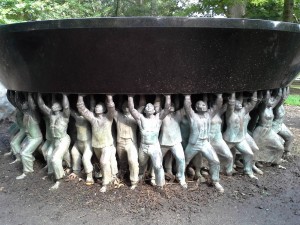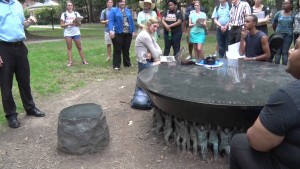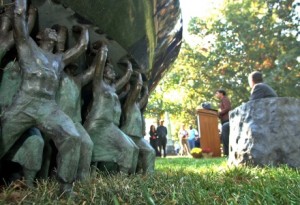I really enjoyed reading Remembering Forgetting: A Monument to Erasure at the University of North Carolina by Timothy J. McMillan. I found parts of the section be eerily parallel to that of Bryn Mawr, and our numerous monuments around campus that go without true public explanation of their pasts (for example; Thomas Great Hall, the now-removed bust in Canaday, the coffin in the cloisters). Although the article did include some photographs of the memorial, I thought it would be interesting to dig up some other ones to share with everyone.
The article did mention that due to people sitting on, or near, the monument, they would have a tendency to brush their feet up against the people figurines below the table. You can see the wear in the first and third photographs, and you can see how people sit around the table in the second photograph.
I found this interesting, but also heavily symbolic. One of the main purposes of erecting this monument was to give a voice to the silenced peoples of the past, specifically black enslaved individuals upon who’s labor the university was created. Interestingly enough, in present times, the symbolic figures are being worn back down into featureless, indistinguishable, masses. Timothy J. McMillan already addressed the three kinds of figures depicted in the memorial, but the physical wearing down of the statues, I think, is painfully ironic. Yet again, you have people of color, specifically black people, who are being broken down by the casual use of white people.
I think this points us, once again, to much larger issues. Although this memorial was intended to create a physical space where people could meet and talk about racial issues that stem from a problematic past, instead we have a table that goes without proper recognition, and is used, and worn down, until the faceless masses blur together once again, putting us in exactly the same position in which we began- oppression and silencing of the past.





